Sunrise Trail
Against the other trails around Nova Scotia, the Sunrise Trail stretching from the New Brunswick border to the Cape Breton Island causeway has some difficulty standing out. No wild Atlantic Coast or spectacularly large tides here. However it was in this area that the first major Scottish settlements were established, so along the Sunrise Trail you will find a focus on the Scottish heritage of Nova Scotia.
Deck of 'Hector' replica, Pictou
The early settlers left a rich heritage. The Gaelic language is still spoken in the small town of Pictou and local people will still wear the tartan and play Highland music. The story of the Hector and her voyage to a new beginning has lived on in the minds of the local people, so they decided to build a replica of the ship to commemorate the voyage. Money was raised locally and a vessel was built to the exact specification of the original Hector. The replica was launched on Saturday 16th September 2000 and it now forms the centrepiece of the Hector Heritage Quay which offers an insight into the journey of early Scottish settlers to Nova Scotia, and their arrival in Pictou.
Our Lady of Grace Monastery, Monastery
Hidden in the peaceful countryside of Nova Scotia is a working Monastery. The Monastery from which the local town takes its name was originally founded in 1825 by Trappist Monks fleeing repression in post revolutionary France. After a fire in the late 1890s the monks relocated to the USA. In the early 20th century a group of French Trappist brothers moved in, only to be dispersed by World War I. In 1938, a group of German Augustinians took over the site to escape Hitler’s persecution of religious orders then in 2000 Maronite Monks founded Our Lady of Grace Monastery here.
Replica of the 'Hector', Pictou
In 1773 the Dutch ship Hector left Ullapool in the highlands of Scotland with 189 passengers bound for Nova Scotia. 28 years earlier the Bonnie Prince Charlie’s Jacobite army had been defeated at Culloden Moor, and her passengers were seeking freedom from the repression that followed Culloden. They wanted to be free to speak their Gaelic language, play their music and wear the tartan. They were not the first Scots to go to Nova Scotia, but they were the first of a wave of of emigration. After a 3 month voyage, the Hector arrived in Pictou and her passengers settled there.
Antigonish Heritage Museum
Although the name of the town comes from the Mi'kmaq Indians, Antigonish is very proud of its Scottish heritage. Each year Highland Games are held here and the town even has its own official tartan. More about the history of the area can be discovered at the Antigonish Heritage Museum, housed in the former CN Railway Station building dating from 1908. We were unable to visit it as it was a Sunday and the museum opens only Monday to Friday.
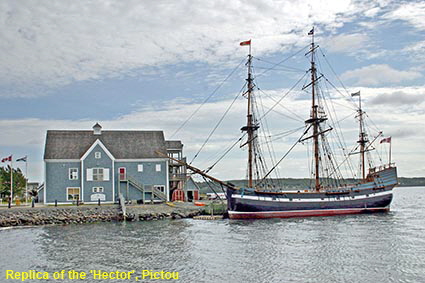
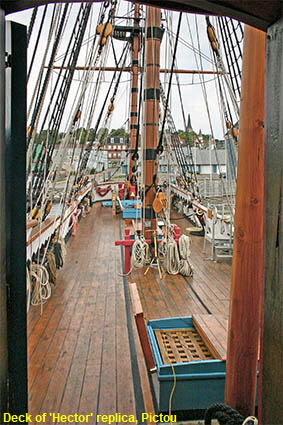
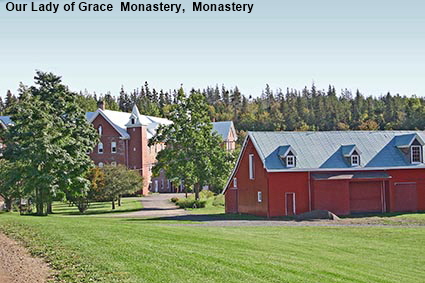
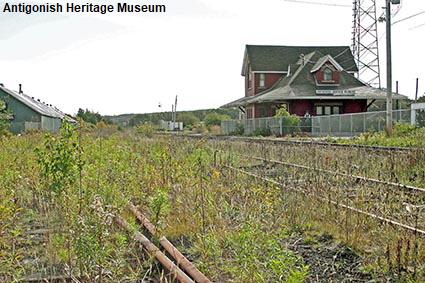
Home > Oh! Canada > Maritime Provinces > Nova Scotia >
Click on Minimap to navigate


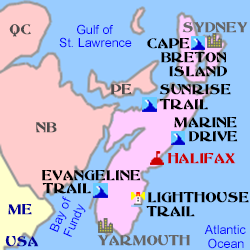
To move forwards or backwards through the Nova Scotia trail click the arrows above, or select your next destination on the Minimap.
DLU060606

© Mike Elsden 1981 - 2023
The contents of this page may not be reproduced in full or in part without permission